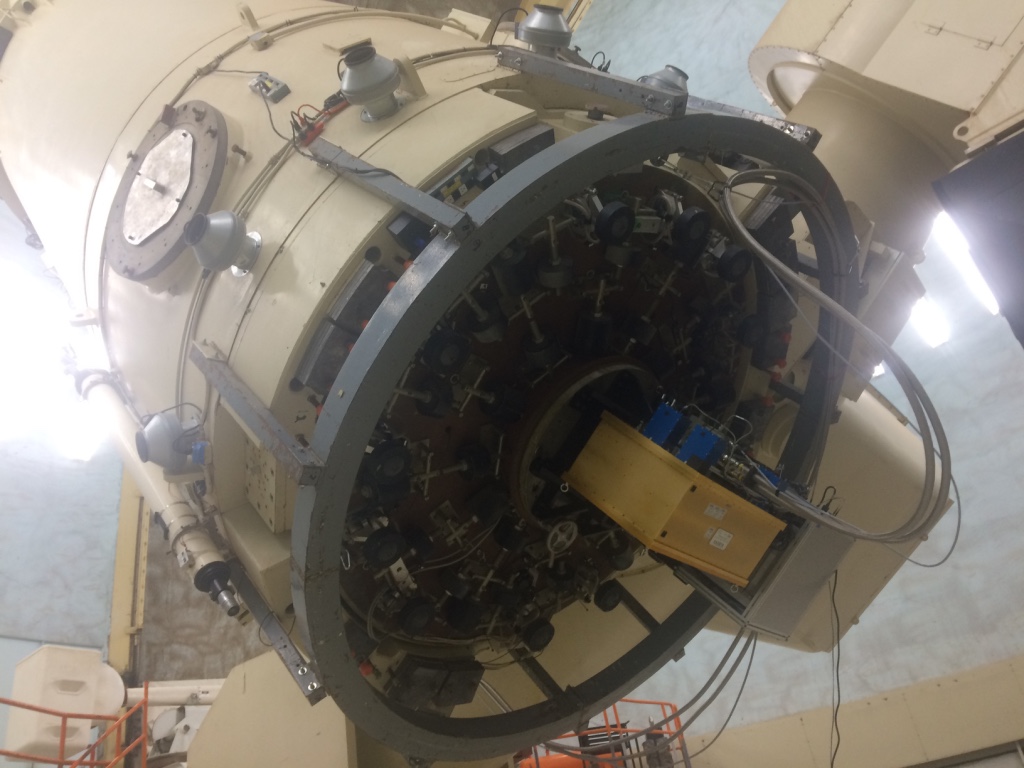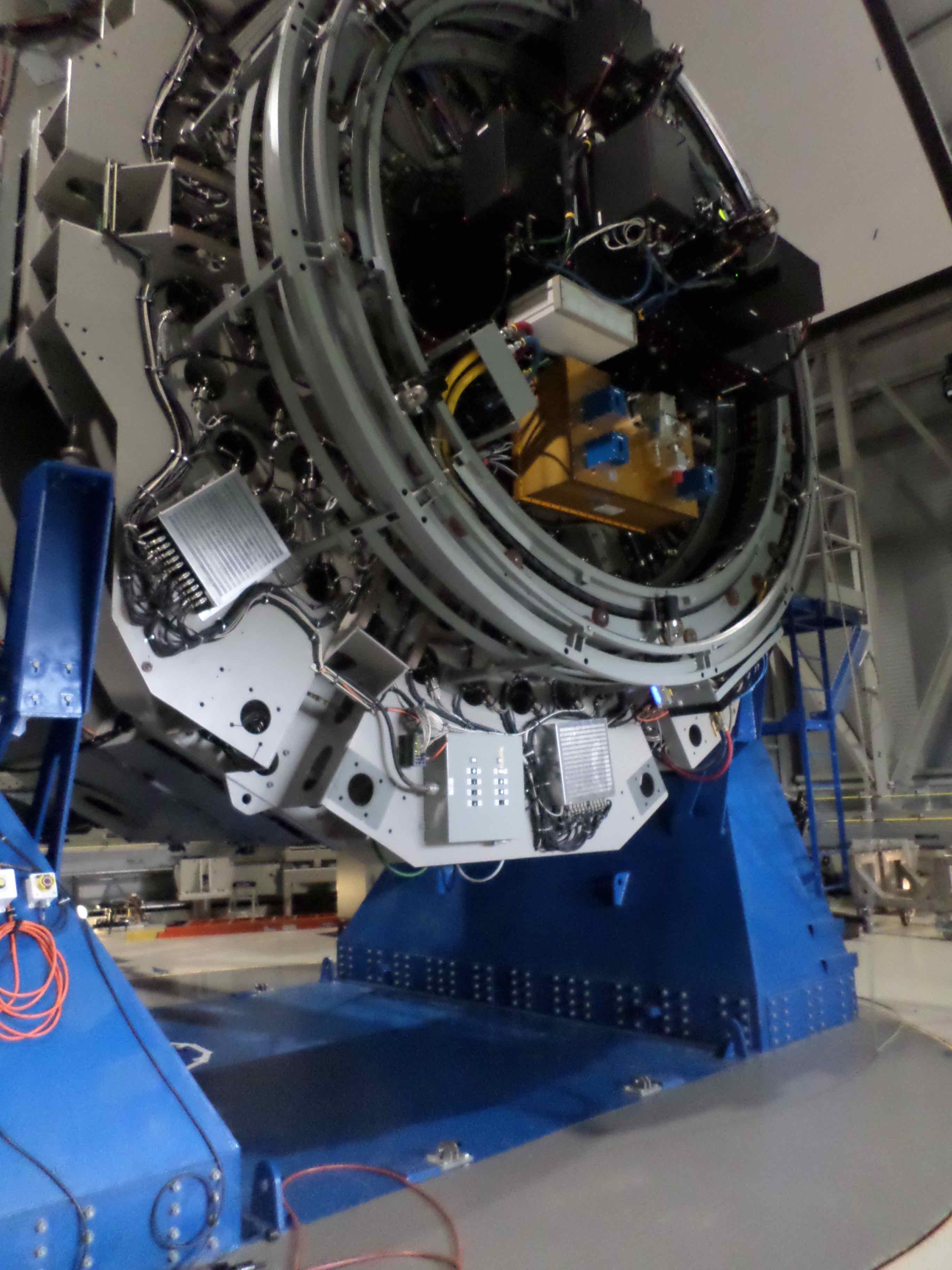IGRINS: Immersion Grating Infrared Spectrometer
IGRINS, the Immersion Grating INfrared Spectrometer, is an extremely powerful and unique instrument that obtains both broad spectral coverage and high spectral resolution.
Instrument Design
IGRINS is a cross-dispersed near-IR spectrograph with a resolving power R=λ/Δλ = 45,000 (Yuk et al. 2010, Park et al. 2014). It can observe the entire H and K windows, from 1.45 to 2.5 microns, in a single exposure. This coverage represents a revolutionary increase in spectral grasp (instantaneous spectral coverage) at high resolution enabled by the use of a silicon immersion echelle grating and two 2Kx2K infrared detectors.
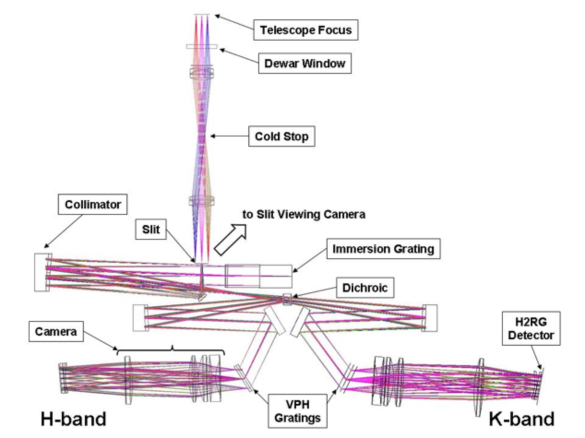
Figure 1: Optical layout for IGRINS. All parts shown are within the cryogenic part of the instrument.
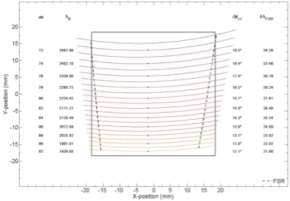
|
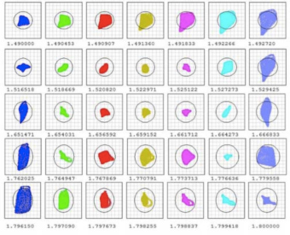
|
Figure 2:(left) K-band echellogram. The box shows the 2048 array. The dashed lines give the nominal ends of the orders. The order spacings on the right are for a 4m telescope. (right) Spot diagrams for the H band. The boxes are 2x2 pixels. The slit width is 3.6 pixels.
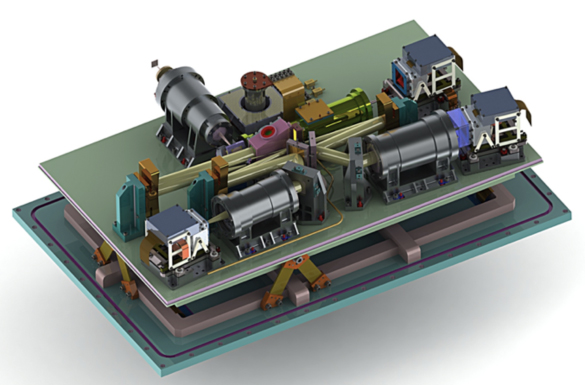
Figure 3: CAD drawing of the IGRINS optical bench. The longest dimension is ~0.9m. Light enters at top center. The immersion grating is in the pink housing at the center and the H and K band detectors are at the lower left and right.
IGRINS has also been optimized for observers. IGRINS has an infrared slit-viewing camera for rapid acquisition in the K band. It has a single observing mode and no cryogenic moving parts. This simple design makes it easy for new observers to master and allows the instrument team to provide a simple data reduction pipeline. The pipeline is primarily authored by Dr. Jae-Joon Lee (KASI) and is publicly available.
By making use of the latest low-noise detectors, a silicon immersion grating, and volume-phase holographic (VPH) cross-dispersers, IGRINS has the sensitivity to attack a broad range of astronomical problems (see Astronomy with IGRINS).
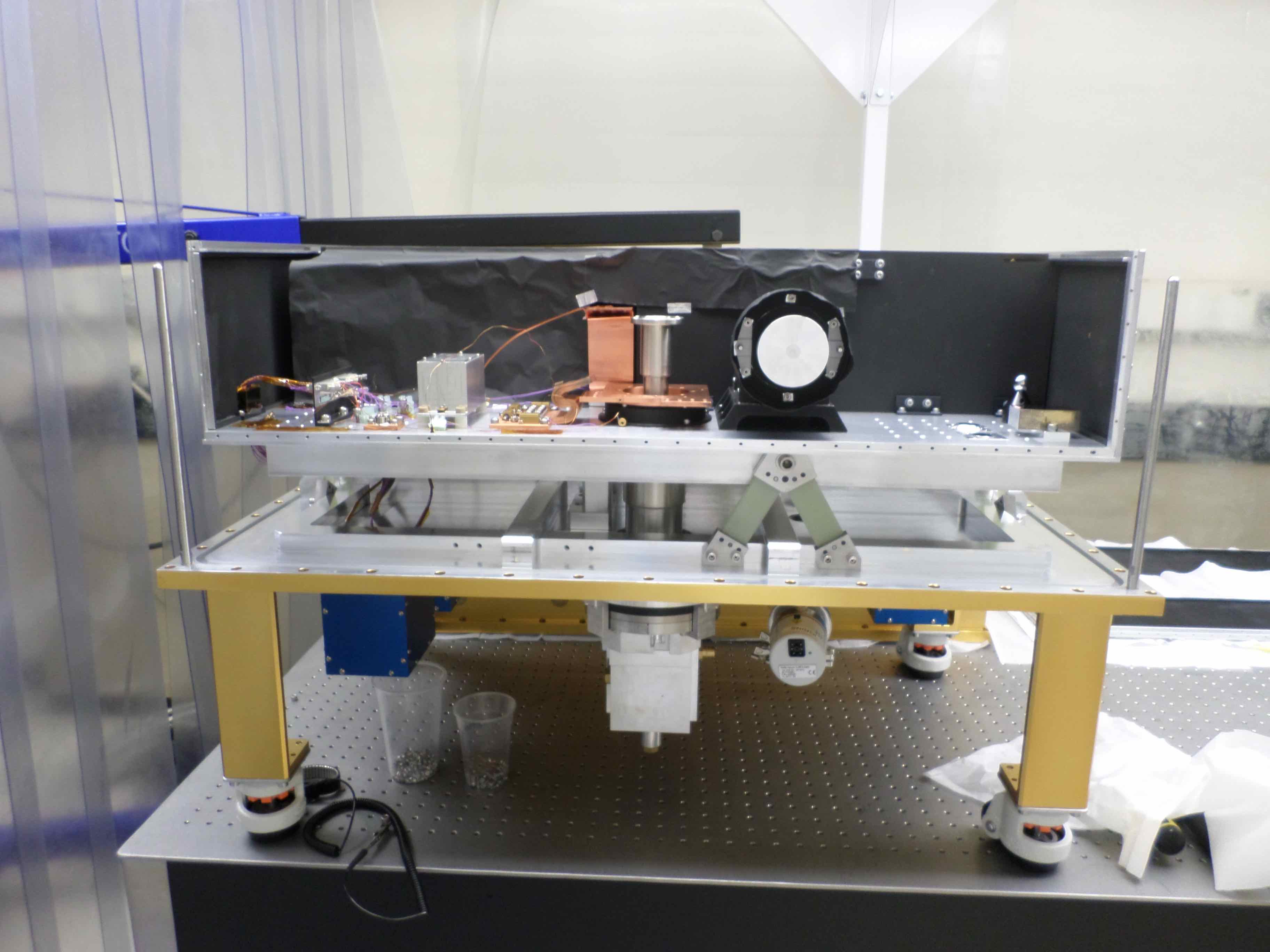
Figure 4: A view inside the IGRINS cryostat, with the window facing us and the coldhead in the center.
Observations with IGRINS
In all, IGRINS has had over 500 nights of observing on three different telescopes, each with unique benefits providing powerful instrument and telescope combinations.
The principal site for IGRINS is the 2.7m Harlan J. Smith Telescope at McDonald Observatory. For further information please see the McDonald Observatory's instrument page (http://www.as.utexas.edu/mcdonald/
Due for a third visit in the upcoming Fall of 2018, IGRINS is also under contract with the 4.3m Discovery Channel Telescope at Lowell Observatory. It has been moving between the DCT and the 2.7m Harlan J. Smith Telescope at McDonald Observatory over the past three years (2016-2019). There is about a magnitude gain in sensitivity, which is essential in accessing faint targets in the North.
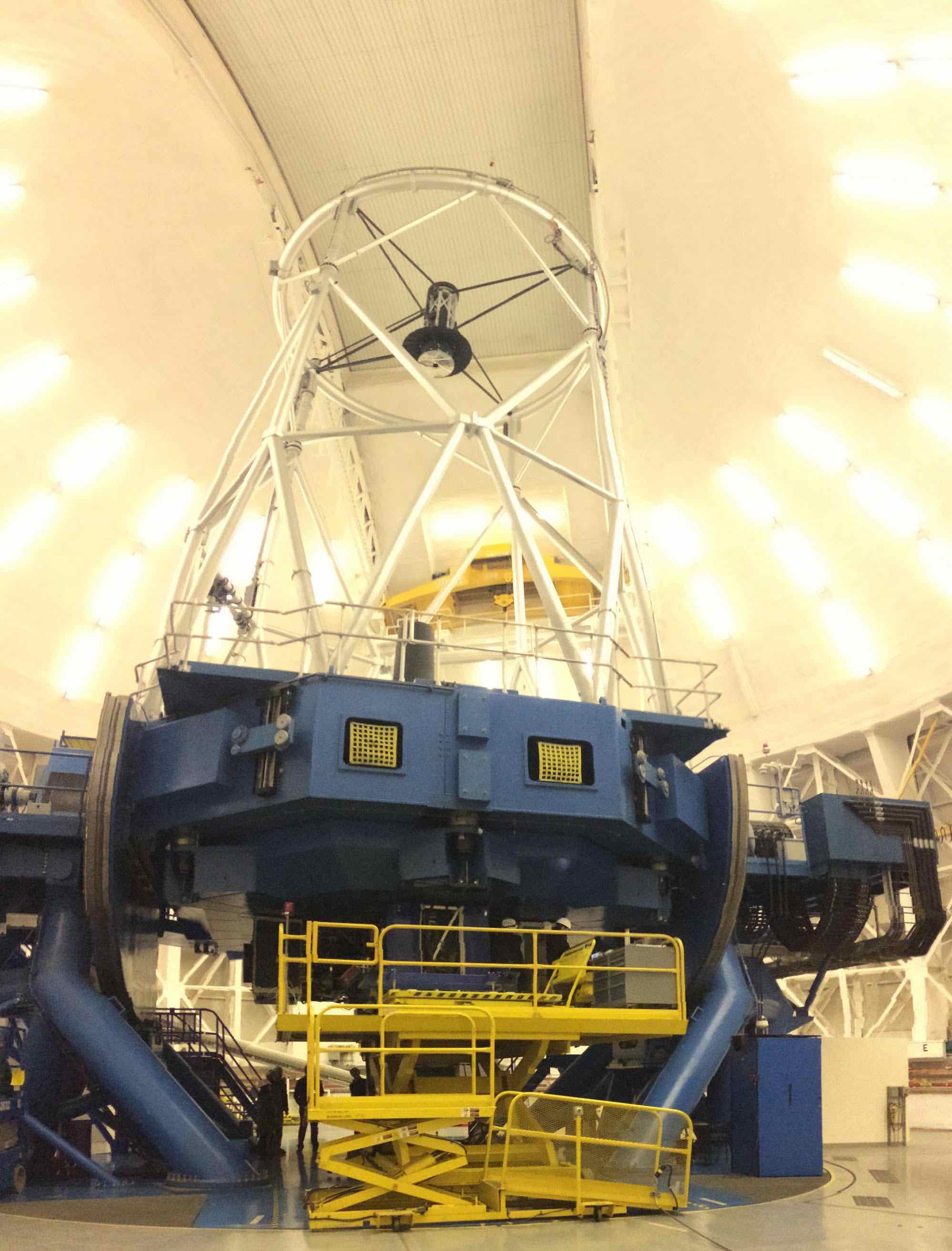
|
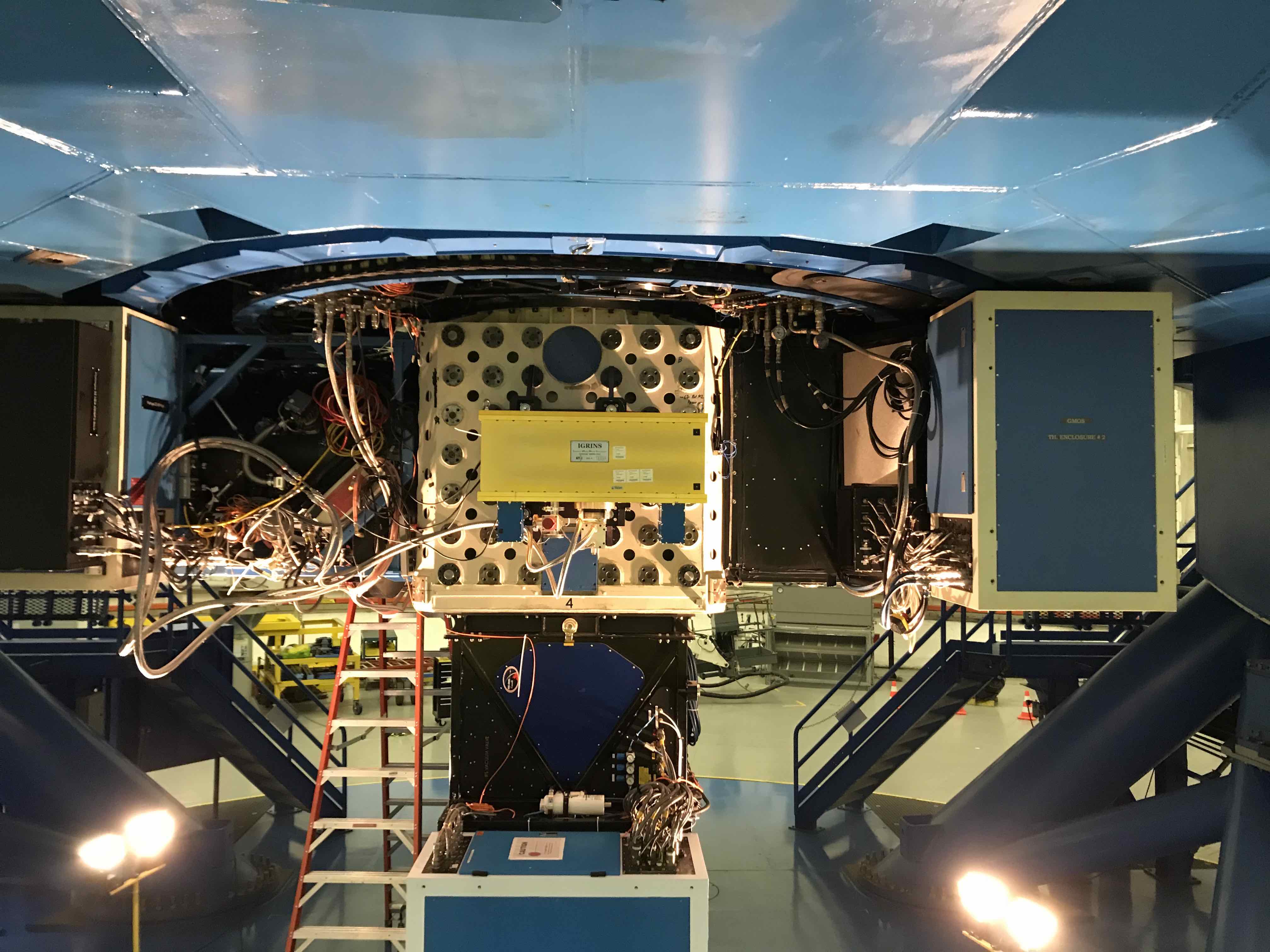
|
Figure 7:(left) IGRINS is currently on the 8.1m Gemini South Telescope in Chile. (right) The instrument cube attaching IGRINS to this enormous telescope.
Currently, over the Spring and Summer of 2018, IGRINS is at the 8.1m Gemini South Telescope in Chile. This is the first time that the Southern skies have been accessible to IGRINS, and there is also a large sensitivity boost.
IGRINS is a PI instrument and is open for use to anyone who obtains time at McDonald Observatory, the DCT, or with Gemini Observatory, with the restriction that observations must include a trained user.
More
IGRINS is a collaboration of the University of Texas, the Korea Astronomy and Space Science Institute KASI. Prof. Daniel Jaffe of UT Austin is the IGRINS PI. Dr. Chan Park of KASI is deputy PI and KASI instrument PI. Dr. Jae-Joon Lee at KASI supervises the IGRINS operational program on the Korean side.
If you wish to contact a member of the IGRINS team, reach out to research associate, Dr. Gregory Mace, or the IGRINS postdoc, Dr. Kimberly Sokal.
May 2018
CNS Help Request · web accessibility policy · web privacy policy

